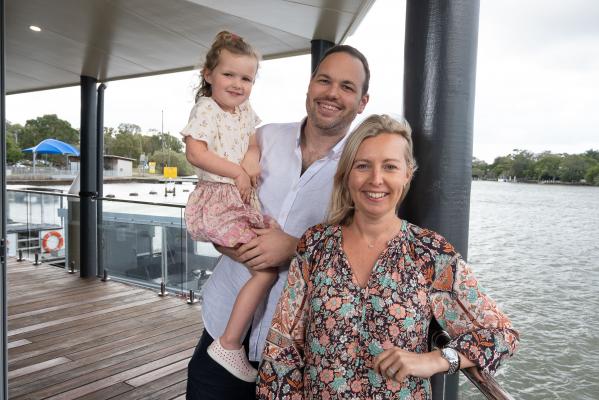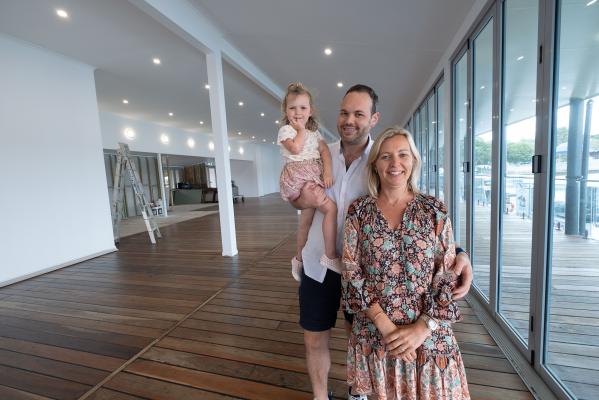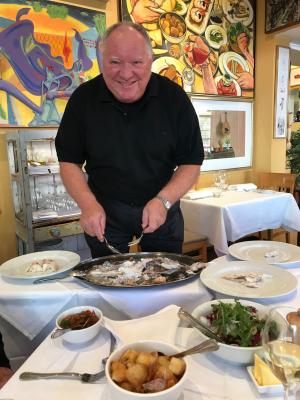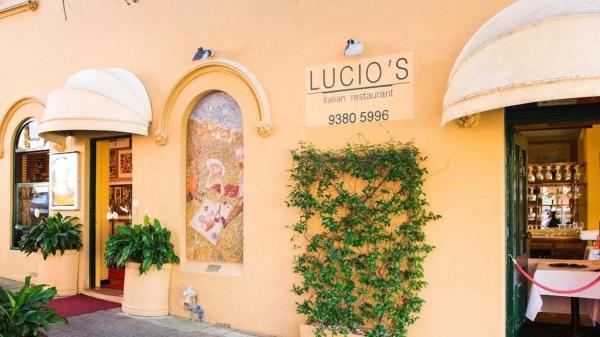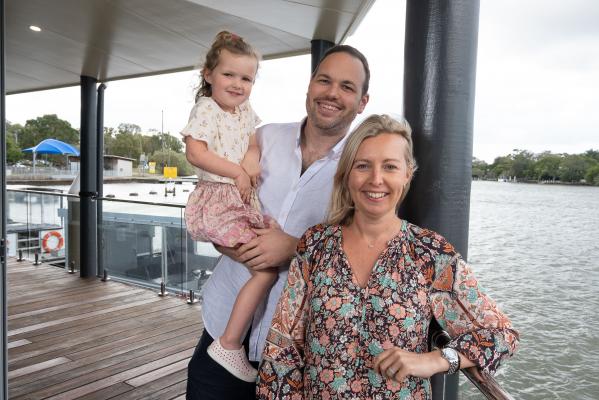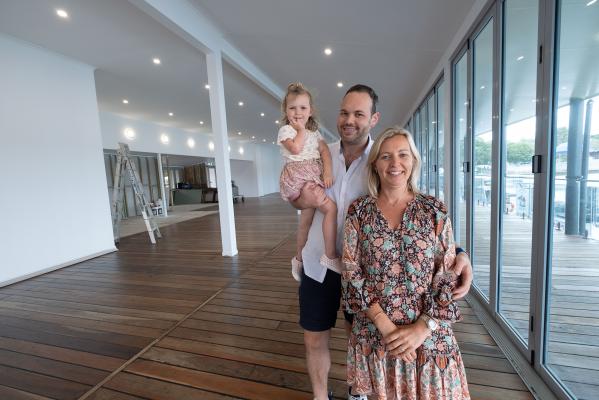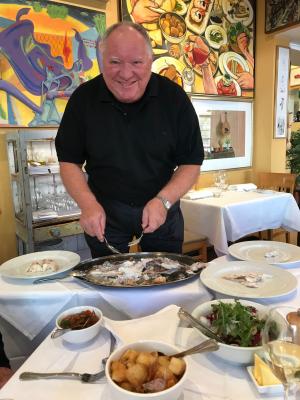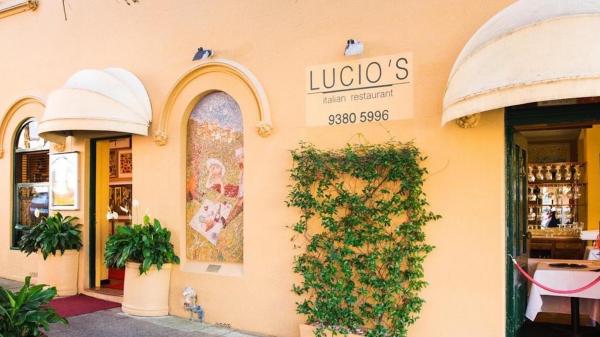By Phil Jarratt
Back in the 1980s, when we all thought we were bullet-proof, I used to indulge in fairly regular long Friday lunches with my colleagues at The Bulletin magazine in Sydney.
On at least two occasions that I can recall – there may have been others that I can’t – our editor David Dale led a small group of us to a newish Italian restaurant in Paddington called Lucio’s, where the food was only surpassed by the atmosphere created by Lucio Galletto and his wife Sally. It was a tremendously convivial place of food, wine, conversation and laughter, while surrounded by the works of great Australian artists which filled the walls.
I moved on to Queensland not long after this time, but my friend Dale stayed on and became obsessed with Lucio’s, travelling with the restaurateur to his home country on Italy’s Ligurian coast several times and eventually writing four books about the family and their passion for good food. And it was Dale who tipped me off a month or so ago that Lucio’s was coming to Noosa.
If you’re a former Sydney foodie now living here – and they are thick on the ground – this will be good news indeed. But Lucio’s Marina, opening on the Noosa Marina in November, will be missing the ingredient that is Lucio himself, at least for now. Son Matteo, who will be at the helm of the new venture, alongside his sister Michela and wife Dieuwke Albertsma, is hopeful that he can entice his parents, who closed their flagship Paddington establishment early this year, to retire to Noosa, where Lucio could relax and play occasional host at the restaurant that will bear his name.
But both Matteo and Michela, who was still in Covid quarantine the day I dropped by the Marina site for a chat, have the restaurant business running through their veins. David Dale told me: “Lucio used to say, ‘I grew up between the tables of my family’s restaurant, but I don’t know if I want that for my children. Running a restaurant is a hard life.’
Dale continues: “Lucio started working as a waiter at the age of 14 in his Uncle Ciccio’s trattoria, Capannina Ciccio, in Bocca di Magra on the Ligurian coast. He never made his children work in his own restaurant, but actually, Matteo and Michela did grow up between the tables. A couple of decades ago, when I was prone to enjoy the occasional long lunch, I would see them arrive in Lucio’s after school. And as they became adults, they decided they wanted to work in their parents’ restaurant, at least part-time.”
Says Matteo: “I was always intimidated by Lucio’s. The first time I worked at our second restaurant in Double Bay I was just 16 and I spilled a glass of red wine over a lady’s white dress. Then, not too long after that I went to work in Italy at Capannina Ciccio, where I was still a nervous klutz. But the more I learned, the more I felt drawn to it. It was good to do it that way because I had the time to appreciate what makes a restaurant successful. As a kid I looked at other options but I really couldn’t see an alternative career, and when I left school a few really close friends also went into restaurants, so that helped.”
Says David Dale: “I’ve watched Michela grow from a shy kid to a confident hostess. I’ve watched Matteo grow from a slightly hyperactive kid to a charming sommelier. Lucio never knew much about Italian wines, but Matteo filled the gap. Over the past 10 years I’ve learned more about wine from Matteo than from any other restaurateur. When Lucio had a day off, the children provided the sense of security that customers needed — a sense that the family was maintaining quality control, even if the maestro was away. I think it’s a good thing that the NSW lockdown has now forcibly separated them from their parents because they will make their own way, benefitting from Lucio’s advice long-distance rather than having Lucio and Sally looking over their shoulders.”
Although he has had a previous success with opening a restaurant by himself – Capriccio in Sydney’s inner west – for most of the past decade Matteo and Michela have run the day-to-day business of Lucio’s, with Lucio hosting and Sally back of house. It was there that he met and married Dieuwke, newly arrived from the Netherlands via the Cordon Bleu school in Paris, who was hired as pastry chef.
When Lucio announced privately his intention to close the Paddington restaurant, Matteo and Dieuwke, now with baby Anna, decided to make a clean break from Sydney and open a restaurant in a rural setting. They looked at the scenic NSW south coast, then looked even closer at Byron Bay before deciding that Noosa offered more of what they were looking for. But even then there was a false start.
Matteo: “We were close to taking the former Wasabi site in Quamby Place. It was great but the rent was going to make it difficult. Then we found this on Noosa Marina (the former Riverdeck) and we knew immediately it was just right.”
Originally there was no intention to call it Lucio’s, but Matteo flew his parents to Noosa to see the place and, just a week or two after the news of Lucio’s Paddington closure had been released, everywhere they ate former customers were coming up to their table to wish him well in his retirement.
Says Matteo: “It suddenly seemed silly not to capitalise on the name, but also the kind of restaurant we were starting to envisage was something Dad and I had been talking about for years, and it related as much to Capannina Ciccio, which the family has run for 70 years, as it did to Lucio’s. Capannina Ciccio’s signature dishes were always seafood pastas, and it’s a trattoria on a river just like this one. And it’s been expanded into spaces beyond the old traditional restaurant, with a deck and a bar, which is what we can do here. Our fine dining restaurant will seat just 60, although the space will hold twice that, but we’re putting in a much bigger kitchen, cocktail bar and indoor/outdoor snack bar.”
Matteo was delighted when I explained there were even more parallels between Noosa and Bocca di Magra, which is just 30 minutes along the bay from Viareggio, the surfing capital of Italy, where I have spent many fun mornings in the surf followed by leisurely six-course lunches in the beach cafes. And I’m looking forward to some similar experiences in Tewantin this summer.
As Lucio’s Marina starts to take shape, Dieuwke is already underway with a dry-aged fish program. She says: “It’s going to be focusing on the fish charcuterie, using kingfish, tuna, swordfish. We’ll be doing a swordfish smoky bacon. Essentially, it’s salting and curing, then using traditional Italian charcuterie recipes, but with seafood.”
This excites my palate, but Lucio traditionalists will be pleased to hear that the signature tagliolini alla granseola will be a feature of the fine dining menu, and a feature wall in that part of the restaurant will house a selection of the celebrated art that used to hang in Paddington.
Says Matteo: “I think it’s naïve to think you can clone a restaurant, but the things that made Lucio’s successful – the hospitality, the honesty, the produce, the ideals – are what we want to put into this place.”

